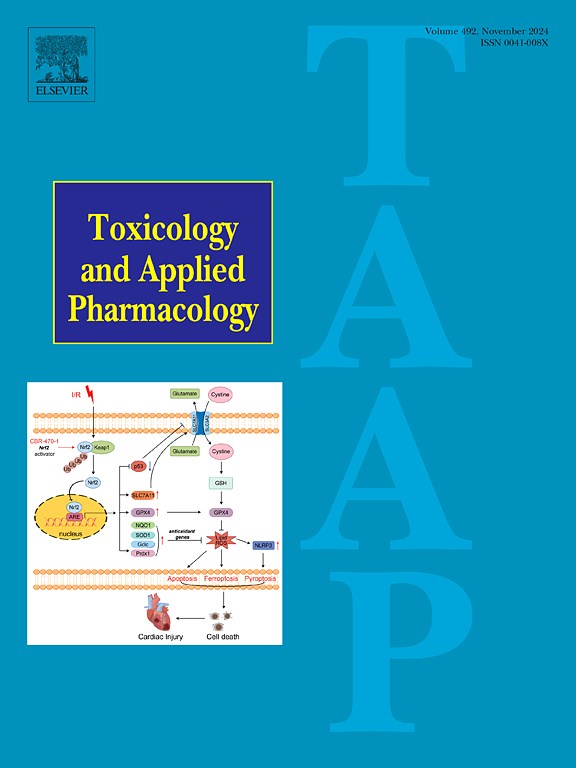Effects of combined continuous renal replacement therapy and ulinastatin on cytokine levels and clinical outcomes in patients with sepsis
IF 3.3
3区 医学
Q2 PHARMACOLOGY & PHARMACY
引用次数: 0
Abstract
This study aims to investigate the effects of continuous renal replacement therapy (CRRT) combined with ulinastatin on cytokine levels and prognosis in patients with sepsis. The control and study groups (40 cases each) were established. The control group received CRRT alone, while the study group received CRRT plus ulinastatin treatment, with both groups being treated for 7 days. We compared the following parameters before and after treatment between the two groups: Sequential Organ Failure Assessment (SOFA) scores, Acute Physiology and Chronic Health Evaluation II (APACHE II) scores, renal function indicators [cystatin C (CysC), blood urea nitrogen (BUN), and serum creatinine (SCr)], inflammatory factors [tumor necrosis factor-α (TNF-α), C-reactive protein (CRP), and procalcitonin (PCT)], and immune function parameters (CD4+, CD8+, CD4+/CD8+ ratio). Additionally, we recorded adverse reactions and 28-day mortality rates in both groups. After 7 days of treatment, the study group showed significantly lower SOFA scores, APACHE II scores, serum levels of CysC, BUN, Scr, TNF-α, CRP, PCT, and peripheral blood CD8+ compared to the control group, while demonstrating higher peripheral blood CD4+ and CD4+/CD8+ ratio. During the treatment period, there was no significant difference in the incidence of adverse reactions between the two groups. However, the 28-day mortality rate was significantly lower in the study group compared to the control group. For patients with sepsis, the combination of CRRT and ulinastatin therapy can significantly improve disease severity, inflammatory factors, renal function, and immune function, while reducing mortality rate.
连续肾替代治疗联合乌司他丁对脓毒症患者细胞因子水平和临床结局的影响。
本研究旨在探讨持续肾替代疗法(CRRT)联合乌司他丁对脓毒症患者细胞因子水平及预后的影响。设对照组和研究组各40例。对照组单独给予CRRT治疗,研究组给予CRRT加乌司他汀治疗,两组疗程均为7 d。我们比较两组患者治疗前后的以下参数:顺序器官衰竭评估(SOFA)评分、急性生理与慢性健康评估II (APACHE)评分、肾功能指标[胱抑素C (CysC)、血尿素氮(BUN)、血清肌酐(SCr)]、炎症因子[肿瘤坏死因子-α (TNF-α)、C反应蛋白(CRP)、降钙素原(PCT)]、免疫功能参数(CD4+、CD8+、CD4+/CD8+比值)。此外,我们记录了两组患者的不良反应和28天死亡率。治疗7 d后,研究组患者SOFA评分、APACHEⅱ评分、血清CysC、BUN、Scr、TNF-α、CRP、PCT、外周血CD8+水平显著低于对照组,外周血CD4+和CD4+/CD8+比值显著高于对照组。治疗期间,两组不良反应发生率无显著差异。然而,与对照组相比,研究组的28天死亡率显著降低。对于脓毒症患者,CRRT联合乌司他汀治疗可显著改善病情严重程度、炎症因子、肾功能和免疫功能,同时降低死亡率。
本文章由计算机程序翻译,如有差异,请以英文原文为准。
求助全文
约1分钟内获得全文
求助全文
来源期刊
CiteScore
6.80
自引率
2.60%
发文量
309
审稿时长
32 days
期刊介绍:
Toxicology and Applied Pharmacology publishes original scientific research of relevance to animals or humans pertaining to the action of chemicals, drugs, or chemically-defined natural products.
Regular articles address mechanistic approaches to physiological, pharmacologic, biochemical, cellular, or molecular understanding of toxicologic/pathologic lesions and to methods used to describe these responses. Safety Science articles address outstanding state-of-the-art preclinical and human translational characterization of drug and chemical safety employing cutting-edge science. Highly significant Regulatory Safety Science articles will also be considered in this category. Papers concerned with alternatives to the use of experimental animals are encouraged.
Short articles report on high impact studies of broad interest to readers of TAAP that would benefit from rapid publication. These articles should contain no more than a combined total of four figures and tables. Authors should include in their cover letter the justification for consideration of their manuscript as a short article.

 求助内容:
求助内容: 应助结果提醒方式:
应助结果提醒方式:


